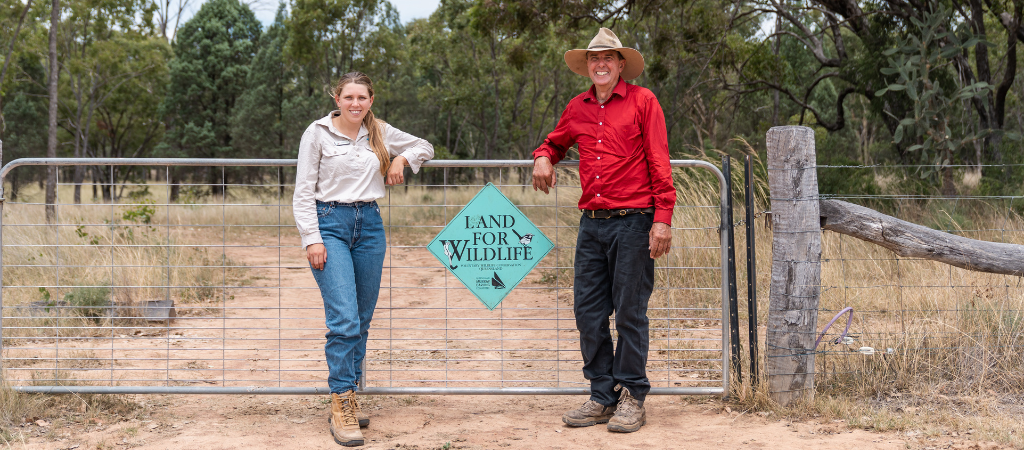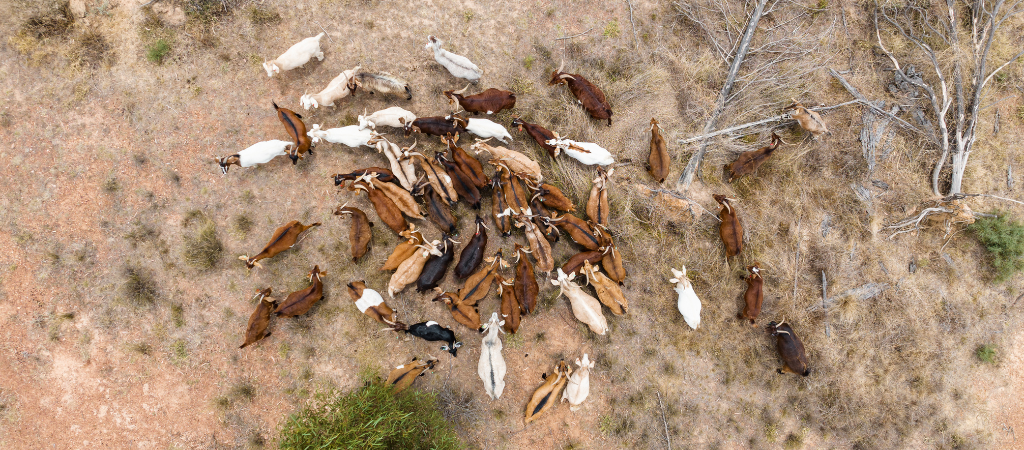by Anna Battle
Looking to the past has enabled an Inglewood land manager to seek solutions for the future sustainability of his farm and secure its viability for the next generation.
Peter Ramsey was inspired to reinstate exclusion fencing around his 2,000 acre grazing property after he noticed the original fencing coming out to ‘Old Paisley’ in a 1927 black and white photo found in the local museum.
“My wife Julie and I live on a property here called ‘Old Paisley’ and her family have been here almost 100 years and we mainly run goats, cattle and a few sheep; and we have a 200-hectare soil carbon project,” Peter Ramsey said.
“We’ve been here two years full time, and our son Angus and his wife Emily and their daughter Zara are becoming part of the farm so they’ll be fourth and fifth generation people who have been on this property,” Mr Ramsey said.
“The things we are doing, I might not see some of them, but hopefully they’ll get the benefit of that,” he said.
“Behind me here is the original exclusion fence and in the last five years we have replaced that fence; my brother-in-law organised to get all the local farmers together, we had a meeting and as a result of that meeting, Ross and I went ahead and did the exclusion fence and since then they’ve all jumped on board and they are all getting the benefits of the State Government’s initiative and that is to fund these exclusion fences.”

Peter Ramsey of ‘Old Paisley’ at Mosquito Creek, discusses the positive effects of their new exclusion fence with SQ Landscapes Project Delivery Officer, Sophie Parker.
The reinstatement of exclusion fencing has allowed the Ramseys to better control wild dogs predating their goat herd and minimise unrestricted grazing of native pastures by large mobs of kangaroos.
“The fence has allowed us to do what we want to do now which is goats, cattle, sheep and the carbon but to control the kangaroos and the wild dogs,” Peter Ramsey said.
“First step for us was to put the exclusion fence up and then everything else followed. The goal going forward is to try and have the least number of livestock mobs possible so you can increase the intensity of the animals in the pasture while they are there,” Mr Ramsey said.
“We have a paddock that I did do some deep ripping and having contours helps to hold the water for a bit longer and the water has gone from leaving the paddock in two hours to about four days,” he said.
“We also have a Land for Wildlife area which Southern Queensland Landscapes set up seven years ago and we have a lot of koalas there.”

The ‘Land for Wildlife’ area at ‘Old Paisley’ was established seven years ago, and Peter Ramsey, pictured here with SQ Landscapes Project Delivery Officer, Sophie Parker, has noticed a significant increase in the numbers of koalas in the area.
Partnering with natural resource management group, Southern Queensland Landscapes (SQ Landscapes) has enabled the Ramseys to target harrisia cactus.
“So the harrisia cactus is a problem that we have in this country here in Goondiwindi and out to St George. SQ Landscapes, with an initiative they had, we were able to purchase some chemical and we’re eradicating harrisia from here,” Peter Ramsey said.
“I think the connections in the industry are really important because there is a lot of people out there that can help us and that’s the beauty, you are not here on your own; there’s a lot of real good local knowledge with Landcare and SQ Landscapes and congratulations on doing a great job,” Mr Ramsey said.
SQ Landscapes Project Delivery Officer Sophie Parker said it’s been a pleasure working with Peter and his family and sharing the success of the sustainable practices he is implementing on his farm.
“As part of the National Landcare Program Peter had received funding from the Regional Land Partnerships Program to specifically target harrisia cactus,” Sophie Parker said.
“But, Peter has also done a range of sustainable trials off his own back and he’s always keen to have a go at anything; this is important as he is able to share his own experiences with neighbours, the local community and then the global community,” Ms Parker said.

Exclusion fencing was the first of a raft of sustainable agriculture practices employed by Peter Ramsey and his family at ‘Old Paisley’, with a view to increasing the grass cover, water holding capacity and eventually stock levels on the property.
Since reinstating the exclusion fence, tackling harrisia cactus and focussing on slowing the flow of water across his property Peter Ramsey said these improvements have translated to an uplift in income.
“Our income has gone up because we were running 50 cattle and selling the weaners and now we are running 25 cows and about 700 nannies but we are producing more kilos,” Peter Ramsey said.
“And with the soil carbon project its a win-win-win because as the soil carbon goes up it's the first time farmers are being paid for something that doesn’t leave the farm; infiltration will go up, our water holding capacity will go up and we’ll grow more grass and we will be able to hopefully run more animals, but run them so we have got more resilience,” Mr Ramsey said.
The Landcare Farming Program (LFP) is a joint partnership between the Landcare Australia and National Landcare Network, and funded by the Australian Government's National Landcare Program to strengthen the connection between landcare and Australian agriculture.










